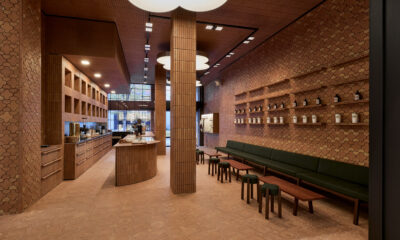Unlike design professionals, the left-brained coders who create today’s omni-channel tools have not spent their lives learning how to use the five senses to manipulate mood in three dimensions. And yet the pixelated experiences that emerge from all those ones and zeros can affect how people feel about brands. So even when the design team crafts an in-store environment that perfectly reflects the brand’s attributes, this could easily be undermined by unfortunate experiences with other channels outside of the store.
A few years ago, one department store chain – I’ll be kind and leave out the name – rolled out a new website. The chain was synonymous for its in-store customer service, and its stores were attractive and well-merchandised. And yet its new site happened to work against the consumer: There was no way for shoppers to find contact information for local stores or salespeople.
Imagine a design team working for a teen-oriented chain. Nothing is more important to teens than the social dimension of life, right? So the designers go out of their way to create an emotional and social experience in the client’s stores. Perhaps they install soft-seating areas and WiFi, along with video monitors and plate-glass windows that put the entire scene on display for passersby at the mall. But if, amid these changes, the store’s app felt like a social outcast, lacking social tools like chat functionality, the in-store design would be only a partial success. You want the kids to feel they can walk out of the store and reengage with this social experience anytime –right on their phones.
Likewise, a crack design team could help a luxury retailer make its stores as sumptuous as any flagship on the high streets of Europe. But if the chain were to launch a pop-up store that relied on a horrific hue of bright orange, the omni-channel experience would be fractured. Ditto if the chain’s catalog were to employ tiny text with too many items on each page, or overwhelm the consumer with information. There’s nothing luxurious about eyestrain.
In an attempt to help companies avoid making mistakes with app-design, in particular, one expert’s online to-do list includes things like conducting “task analysis” and “paper-prototyping.” While helpful, this rational list is all about functionality – it lacks any reference to brand attributes and shows no cognizance of today’s imperative to have a seamless experience, in store and out.
And so the onus is now on design professionals to become experts, not just in furniture or flooring, but also in the ins and outs of how good design can bolster omni-channel retailing. The goal should be to forge a strong and consistent connection with consumers, whether the channel is a mobile app, an ecommerce-enabled website, a catalog, a pop-up store or an inline space at the mall.
Advertisement
This means retail designers need to learn how to persuade clients to keep them in the loop on design-related decisions that influence how shoppers feel about the brand. Indeed, some firms, my own included, can already create catalogs or apps for clients per specific brand attributes. But even designers who work mostly in the brick-and-mortar space can spot aesthetic and other failures that are inconsistent with the emotional bond a chain aims to create.
In this age of “Big Data,” retail is becoming increasingly rational. But if the right hand creates a connection with consumers, it is critical to make sure the left hand doesn’t inadvertently “swipe” it away.
Peter Burgoyne is creative director at CBX.


 Headlines1 week ago
Headlines1 week ago
 John Ryan2 weeks ago
John Ryan2 weeks ago
 Headlines1 week ago
Headlines1 week ago
 Headlines2 weeks ago
Headlines2 weeks ago
 Headlines2 weeks ago
Headlines2 weeks ago
 Retail Buzz3 days ago
Retail Buzz3 days ago
 Headlines1 week ago
Headlines1 week ago
 Headlines2 weeks ago
Headlines2 weeks ago















